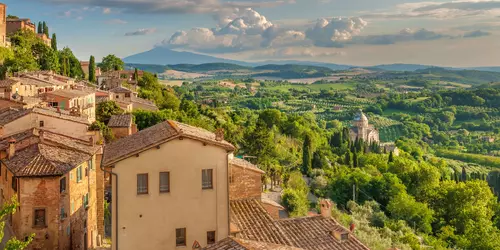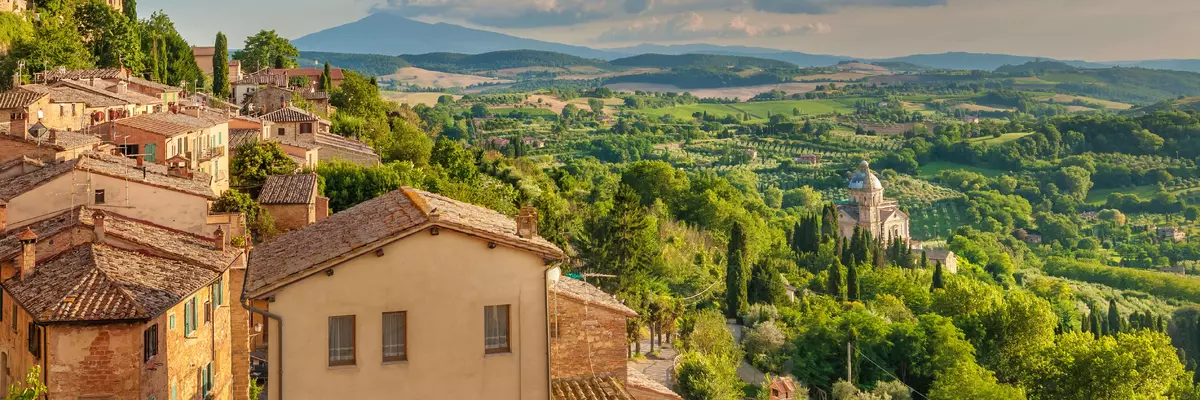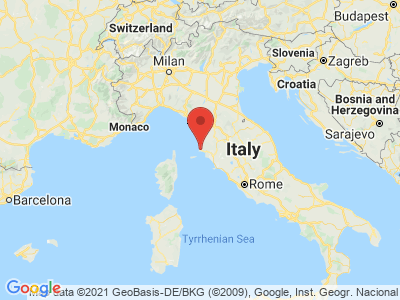Climate Table Tuscany
Jan | Feb | Mar | Apr | May | Jun | Jul | Aug | Sep | Oct | Nov | Dec | |
|---|---|---|---|---|---|---|---|---|---|---|---|---|
| Max. Temperature | 11° | 12° | 14° | 17° | 21° | 25° | 28° | 29° | 25° | 20° | 15° | 11° |
| Min. Temperature | 2° | 2° | 5° | 7° | 11° | 14° | 17° | 17° | 15° | 11° | 6° | 3° |
| Sun Hours | 3 | 5 | 6 | 6 | 7 | 9 | 10 | 9 | 7 | 5 | 4 | 3 |
| Rain Days | 12 | 8 | 11 | 14 | 10 | 7 | 5 | 4 | 10 | 13 | 16 | 15 |
The climate year of Tuscany
Tuscany, formerly Tuscia, was inhabited in ancient times by the Etruscan people, who also gave it its name. With an area of about 23,000 km² (half the size of Switzerland) and 4 million inhabitants, Tuscany is one of the most popular cultural landscapes in Italy. The capital Florence, Lucca, Pisa, Livorno and the famous big river Arno are located in the north, the Ombrone and the cities Siena and Montepulciano in the south. Tuscany has a predominantly temperate Mediterranean climate with dry, hot summers and frost-free, humid winters. Spring is known for the poppies turning the hills and valleys red, in summer the yellow of the sunflowers and the purple of the lavender fields predominate, and in autumn the dark red grapes hang from the vines. For the nature lover and culture buff, the months of May/June and September/October are ideal, as these months are pleasantly warm for hiking and sightseeing, but not hot or too humid.
General information about Tuscany
Tourism is an important source of income for the inhabitants of Tuscany, not only in the well-known cities such as Florence, Siena, Lucca and San Gimignano, but also in the small towns that have a lot of charm and attraction. Southwest of Florence, the tourist encounters Volterra, surrounded by Etruscan and medieval walls. The city, perched on a plateau, is famous for its bright alabaster figures and has an Alabaster and Etruscan Museum. The old town of Colle di Val d'Elsa sits on a tufa hill and artisans put the finishing touches on crystal figures. Masterpieces of crystal can be seen at the Museo del Cristallo. South of Siena is Montalcino with its fortress and great views of the surrounding countryside. The town became famous until USA by its red Brunello, which is one of the three most famous and precious wines of Italy. At the southern tip of Tuscany lies the town of Pitigliano with its grottos and tufa rocks. The houses are crowded together and lead to the 13th century cathedral.
Tourism Tuscany
In July, the highest temperatures were recorded in Florence at 31°C, and the lowest in January at 1.4°C. Those planning a beach vacation in Tuscany should choose the months of July to September. The temperature differences between Florence and Livorno are not very large, so in Florence from May to September the average maximum temperatures are 25°C to 31°C and in Livorno from June to September 26°C to 30°C. Rainy days are well distributed in Tuscany, there are no long dry periods and no direct rainy season. However, from the end of October to the end of January the most rainfall takes place in the whole area.


